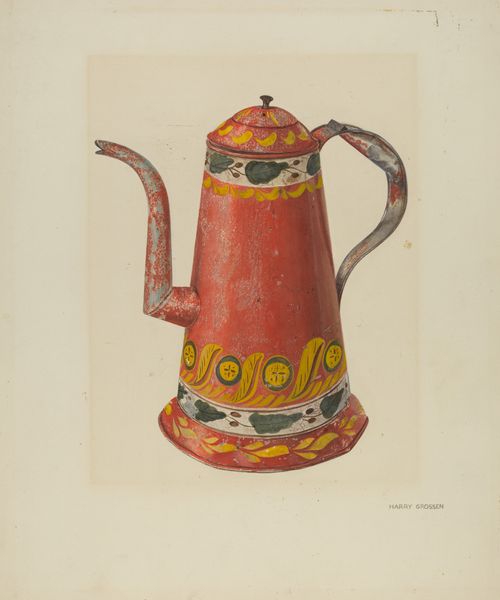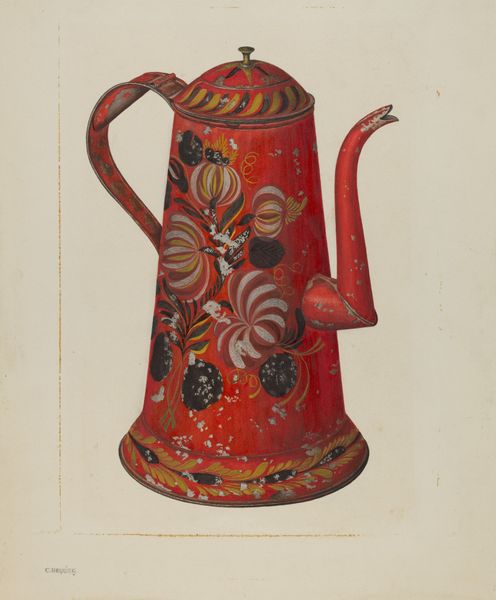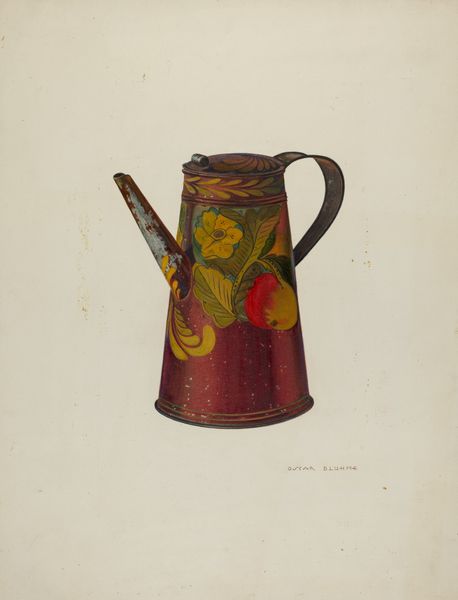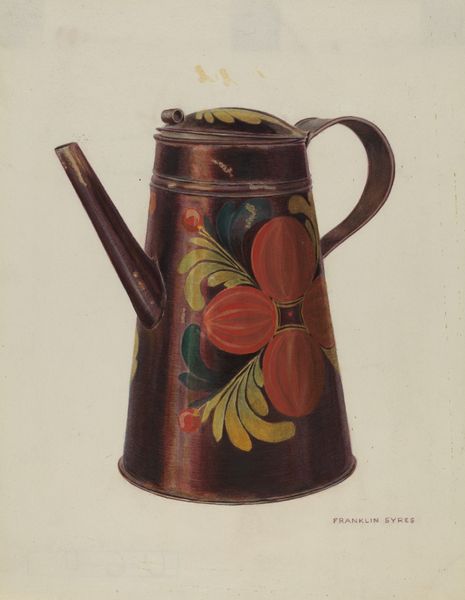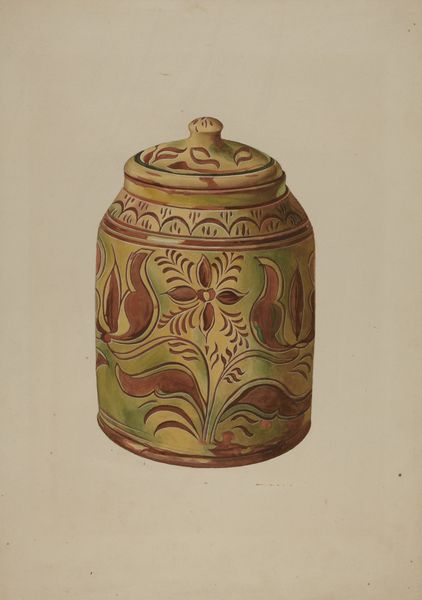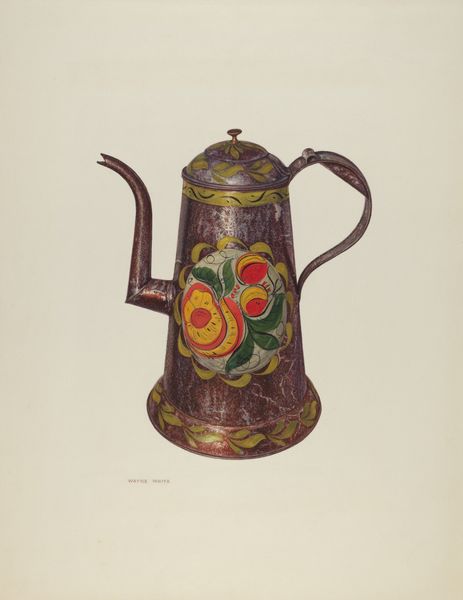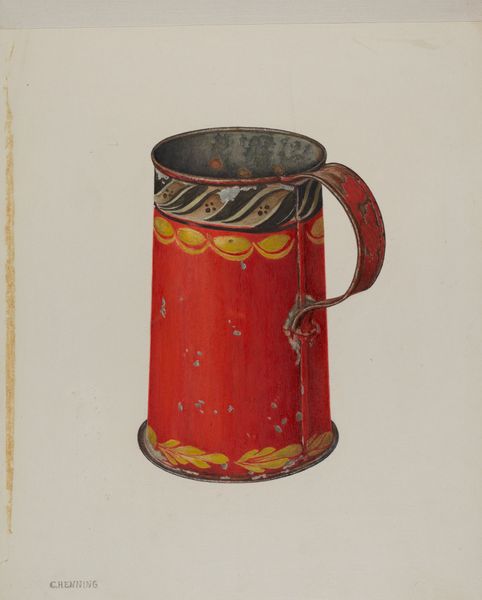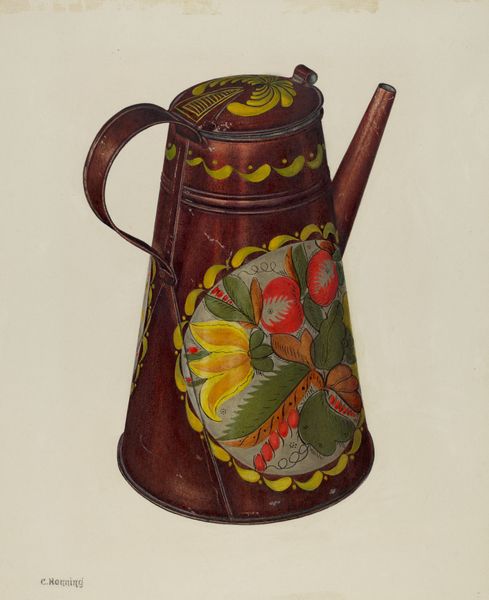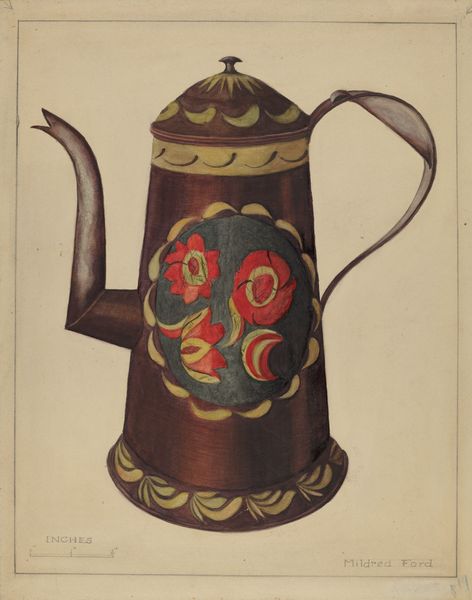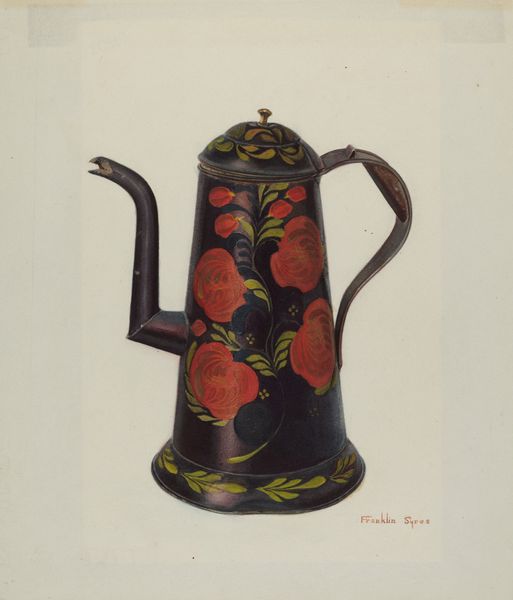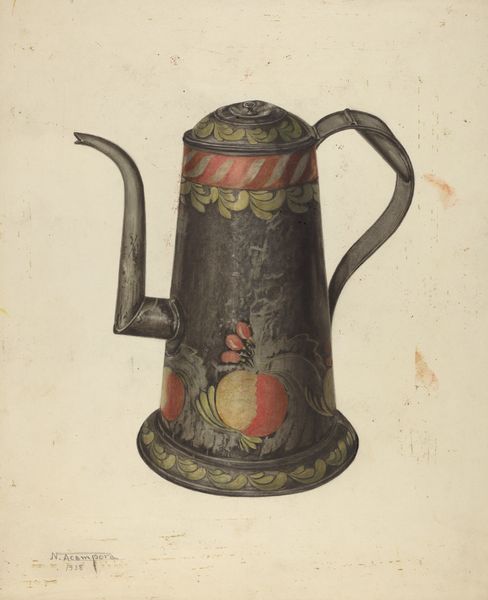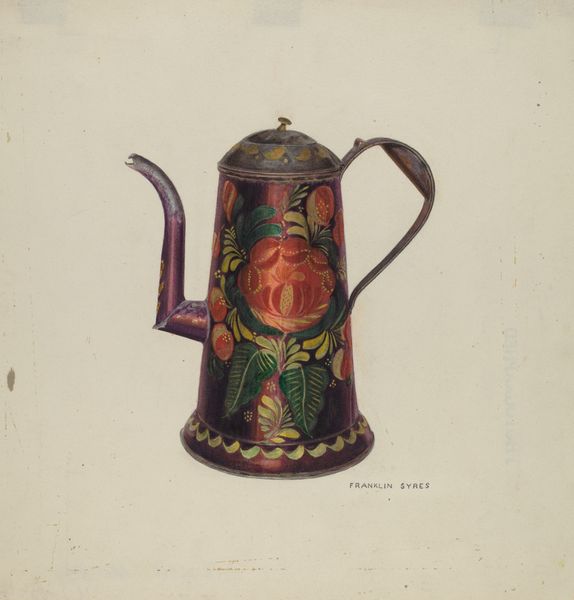
drawing, watercolor
#
drawing
#
caricature
#
watercolor
#
folk-art
#
watercolour illustration
#
decorative-art
#
watercolor
Dimensions: overall: 38.3 x 28.7 cm (15 1/16 x 11 5/16 in.) Original IAD Object: 8 1/2" high; 6 1/16" in diameter
Copyright: National Gallery of Art: CC0 1.0
Curator: Ah, yes, “Coffeepot” by Charles Henning, circa 1940. What a cheery artifact rendered in watercolor and drawing! It’s an interesting example of folk-art inspired by decorative arts traditions. Editor: Cheery is exactly the right word. The first thing that struck me was its homemade, folk-art vibe. It's delightfully imperfect; the design is charmingly clumsy but endearing. It almost vibrates with rustic warmth and energy. Curator: Its art historical significance lies in its illustration of everyday life depicted in American art. We see this a lot, these domestic still-lifes made during the early twentieth century in both paintings and other visual arts forms. Editor: Do you think that folksiness could be interpreted as a kind of reaction against the rise of industrialization during that time, almost a longing for a simpler life before everything was manufactured? It feels like the pot itself—and its representation—embraces the handmade. Curator: Absolutely, there’s a subtle but powerful commentary woven into pieces like this, touching on those societal shifts and anxieties around authenticity. It harkens back to pre-industrial domestic craft when life was built around small communities and not big business. Editor: And then there's that insistent red. It gives the entire piece such a vibrant, folksy exuberance. The hand painted florals are endearing, I just want to cozy up with a mug! Do you see hints of social commentary there, like celebrating those marginalized practices that resisted mechanization, maybe the human spirit finding joy? Curator: A nice suggestion. And even in the method, watercolor and drawing, he consciously contrasts with the sleek, mass produced items being turned out en masse. The color, of course, speaks volumes about its cultural use, given how essential coffee became to the rise of the new modern workforce. Editor: Exactly! It seems that "Coffeepot" functions as more than a simple still life. What seemed initially just cute might become a compelling object if you see it as encapsulating the anxieties, or a way to cherish handmade folk culture and protest a world that seems like it's disappearing. It really highlights the politics embedded in the everyday object. Curator: A thought-provoking point. It adds layers to appreciating pieces that, on the surface, seem simple and celebratory. Thanks for adding fuel to the percolator of our minds. Editor: Likewise! You make one consider just how profoundly such folk works really comment on cultural evolution, reflecting deeply on the quiet resistance of folk artistry amidst massive global change.
Comments
No comments
Be the first to comment and join the conversation on the ultimate creative platform.
